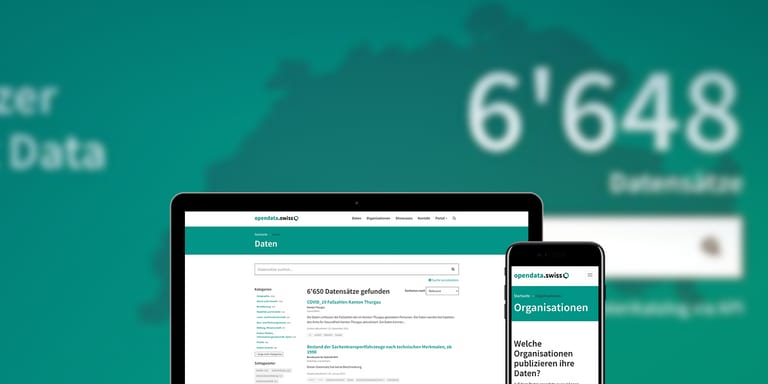Was ist opendata.swiss
Opendata.swiss is Switzerland’s national open data aggregation portal. The new ‘open by default’ strategy has applied for Swiss federal authorities since 2020. Open government data is a global movement to make official data available to the general public, unless this is not possible for data protection or safety reasons. The aim is firstly transparency, and secondly the added social value that can result from the free use of data. Liip’s history with open data began in 2011
What technology is the portal based on?
The portal was made using a mix of various technologies. However, the primary technology is called CKAN. CKAN is open-source software for data portals. It is used all over the world, including by the European data portal.
Evaluating CKAN
CKAN definitely has competition in the commercial sector, but it remains the market-leader in the open-source sector. CKAN offers excellent support for data portals’ primary task: making data searchable by supplying it via a search engine.
CKAN is an all-rounder
CKAN is a complete solution, As a portal operator, CKAN offers good coverage of all areas: front-end design, loading data from external data sources (‘harvesting’), and so on. One good example of its use is the city of Zurich’s data portal.
But CKAN is a niche product
CKAN only has a small user group. There are an estimated 1000-2000 installations of this software. A small user group like this makes it a niche product with a limited budget that is only developed at a slow pace.
CKAN as a complete solution is often not modern enough to meet demanding requirements
As a result, CKAN often lags behind current standards, particularly as regards the front end. For example, it is still on Bootstrap 3, and uses Jinja templates and jquery. If an application has sophisticated requirements (as national and international data portals do), then the question is, how do we overcome this modernity logjam? As a niche user, are you forced to accept the slow pace of development within your niche, or are there other options?
Escaping the niche
In other words, changing your perspective to see if there are other areas that could offer potential options. CKAN is a complete solution, so it consists of various components. What are the components of CKAN?
The core of CKAN: the search engine
At its core, CKAN is a search engine that collects, manages and processes data: this core represents the mechanics behind the data portal. It is CKAN’s unique selling point, and in our view is essential.
A dual interface consisting of API and front end
There is one astonishing thing about the CKAN interface: the open data movement works to make data usable via metadata that serves humans and machines in equal measure. CKAN has completely incorporated this duality. The interface consists of two equal sections: the API as the application interface, and a website as the interface for humans to view the data. This dual interface is a particularly interesting starting point for modernisation.
Refactoring opendata.swiss
The mechanics stay the same
In refactoring opendata.swiss, we opted to adhere even more closely to the CKAN software for the CKAN mechanics. The WordPress back end for CKAN that opendata.swiss previously used was removed. Now, CKAN alone is used to manage the metadata. In terms of hosting partners, we also switched to a CKAN specialist in the shape of Datpoian.
The interface becomes an ‘app’
The duality of the CKAN interface, serving both humans and machines, helped with the modernisation of the front end. opendata.swiss’s new front end is now an app that can still access the CKAN, just now via an API. More precisely, it is a node application created using the modern framework nest.js. We have not changed the theming, but the front end is now independent and can be developed further in a flexible, efficient way. It is easy to add new subpages or integrate additional applications. There is also nothing to prevent an interface redesign.
Conclusion
We are delighted with the new, future-oriented architecture of opendata.swiss.

